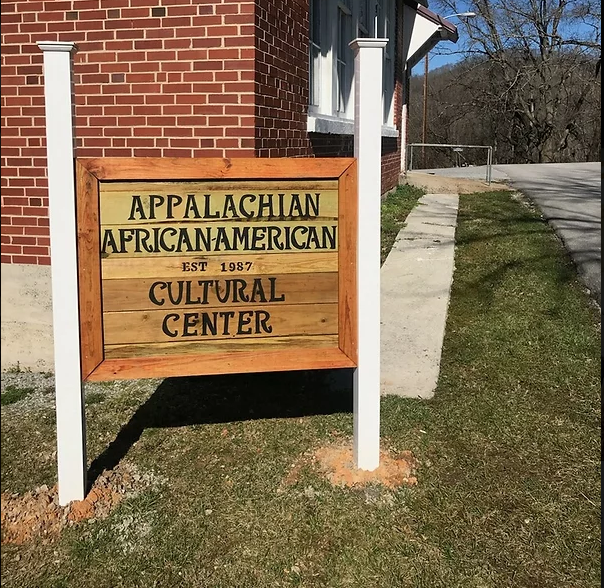Located at 230 N. Leona Street in Pennington Gap, Virginia, the Appalachian African-American Cultural Center, in its former life, was the Lee County Colored Elementary School. This one-room schoolhouse was the only primary school for Blacks in all of Lee County. The center’s mission, according to its website, involves “preserving the life stories, history, heritage, culture and events of African Americans in far Southwest Virginia”.
The existence and success of the Appalachian African-American Cultural Center is due to Ron and Jill Carson. The school was constructed in 1940 on land that Ron’s great-great grandmother, Rachel Scott, donated. Having moved to Pennington Gap circa 1900, she worked as a barber for White clientele. Saving and investing, Scott was able to obtain a great deal of wealth, including a nineteen-room home and three-hundred acres of land.
By the late 1930s, there were approximately two-thousand Blacks who lived in Lee County. Living in complete segregation, the only primary school education option for them at that time was an informal school held in the basement of a local church. In 1939, Scott gifted the land and Lee County Colored Elementary School opened the following year. Carson’s mother was a member of the school’s first class.
Ron Carson, who was born in 1953, also matriculated the school until integration was legally enacted. As such, the 1965-66 academic year was the final year that the school operated. In 1967, he and other Black eighth graders were transferred to Pennington High School. In “The Appalachian African-American Cultural Center: Building on the Past” by writer Carl Hoffman, Carson spoke on the bittersweet and complex memories of his young life in segregation. This commentary included independence, the value of community and education. In the article, he reflected, “I cried when our teacher gathered us together and told us we wouldn’t be here next year … At any one time, there were about 30 kids in the building and some of the seventh-graders were 17 and 18 years old. Just down the path was the modern school for Whites. I remember thinking, ‘Why don’t we have a playground? Why don’t we have monkey bars? Why don’t we have a cafeteria? Our balls were socks balled up and sewn together and our bats were broomsticks. Our bathroom was an outhouse, and the building was heated by a pot-bellied coal stove.’”
However, Lee County Colored Elementary School provided education and hope for a better life for the close-knit Black community. Ron Carson returned to his family land when he and his Bostonian wife, Jill, chose to settle down to a more simple life in Pennington Gap. The home they built is located directly across the road from his former elementary school.
When the Carson couple moved into their new home in 1988, they also staved off the county’s decision to auction away the former schoolhouse. Aghast, they worked to have the site registered as a historical landmark and after several obstacles, they were successful. Ron and Jill now owned the building and non-profit organization that would comprise the Afro-American Culture Center.
After becoming Fellows at the Highlander Research and Education Center’s Southern and Appalachian Leadership Training Program, the Carsons decided to expand their vision to include honoring the similarities of persons of all races. This inclusion prompted a change to a new name, the Appalachian African-American Cultural Center.
They soon began efforts to develop the Center. In their free time, the Carsons began to document oral histories of Blacks who lived in Lee County. In the Hoffman article, the author detailed their outreach, writing, “They held a memorabilia night, to which people brought old desks from the school, report cards, and photos. With a $3,500 grant from the Appalachian Community Fund, they renovated the building. They organized a Race Unity Day at a local park, which drew 400 people and has been held every year since. They have organized Black history programs at local elementary, junior high, and high schools and at colleges. They bring preschool children into the center on a regular basis for short talks on the school’s history. Connecting with the Appalachian cultural and educational organization Appalshop helped them organize monthly story swaps at the center … and Appalshop has begun to incorporate those stories into its traveling Roadside Theater productions, which have been performed at schools throughout Appalachia.”
Tragically, a mysterious fire devastated the Center in 1994, destroying much of the primary documents, oral histories and memorabilia. Adding to this criminal loss, which has never been solved, was the purposeful delay of insurance funds to be distributed to re-build the Appalachian African-American Cultural Center. Although discouraged, Ron and Jill Carson knew they had to fight for justice.
Since, the Carsons continue to work and rebuild the center. Though facing various challenges, including that some do not want to be reminded of the sufferings of the past, Ron Carson is passionate about learning and honoring the past of the Black residents in Appalachia Virginia. In his commentary to Hoffman, he affirmed, “‘How can you say you know where you’re going if you don’t know where you’re from?’ Carson pauses, and gazes at an old photo of Black coal miners. ‘I like to come down here on Sunday mornings before church and just listen to the ghosts talk.’”
The Appalachian African-American Cultural Center is open by appointment. It houses a library of Black literature and hosts discussions and develops workshops on racism. It also offers oral history presentations but they are only available on request.
